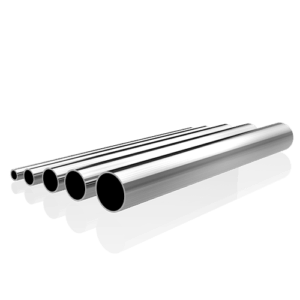Welcome to My Blog!
Before we dive into the content, I’d love for you to join me on my social media platforms where I share more insights, engage with the community, and post updates. Here’s how you can connect with me:
Facebook:https://www.facebook.com/profile.php?id=100090063158454
Now, let’s get started on our journey together. I hope you find the content here insightful, engaging, and valuable.
Introduction

China 304 stainless steel has become an indispensable material in modern industries due to its exceptional properties and versatility. Its unique combination of corrosion resistance, strength, and durability makes it a preferred choice for a wide range of applications, from food processing equipment to architectural structures. This comprehensive guide delves into the intricacies of this remarkable alloy, exploring its composition, manufacturing processes, properties, and diverse applications. Whether you’re an industry professional, a DIY enthusiast, or simply curious about the materials that shape our world, this article will provide you with valuable insights into the world of 304 stainless steel.
Understanding the Composition and Properties of 304 Stainless Steel
304 stainless steel is an austenitic alloy primarily composed of iron, chromium, and nickel. The careful balance of these elements imparts the alloy with a unique set of properties that make it highly desirable in various industries. Chromium, a key component, forms a protective oxide layer on the surface of the steel, preventing corrosion. Nickel, on the other hand, enhances the alloy’s ductility and toughness, making it easily formable and resistant to impact. The specific composition of China 304 stainless steel, typically around 18% chromium and 8% nickel, contributes to its excellent corrosion resistance, high strength, and good formability.
Manufacturing Processes for China 304 Stainless Steel
The production of China 304 stainless steel involves a meticulous series of processes, each contributing to the final quality and properties of the material. The process begins with the smelting of iron ore to extract molten iron. This molten iron is then refined and alloyed with chromium and nickel to form stainless steel. The resulting steel is subjected to hot rolling to shape it into desired forms at high temperatures. Subsequent cold rolling further refines the steel’s properties, improving its surface finish and mechanical properties. Annealing, a heat treatment process, is employed to soften the steel and relieve internal stresses, making it more ductile and easier to work with.
The Wide Range of Applications for 304 Stainless Steel
The versatility of China 304 stainless steel has led to its widespread adoption in numerous industries. In the food processing industry, its exceptional corrosion resistance makes it ideal for manufacturing equipment that comes into direct contact with food and beverages. Architectural applications benefit from the aesthetic appeal and durability of China 304 stainless steel, which is used to create stunning facades, cladding, and structural components. In the automotive industry, 304 stainless steel finds use in exhaust systems, body panels, and other components that require high strength and corrosion resistance. Chemical processing equipment often relies on 304 stainless steel to withstand harsh chemical environments, ensuring reliable and efficient operation.
Common Misconceptions About China 304 Stainless Steel
Despite its widespread use and well-established properties, there are several common misconceptions about China 304 stainless steel. One such misconception is that all stainless steel is magnetic. While some grades of stainless steel, such as ferritic and martensitic grades, are magnetic, 304 stainless steel is generally non-magnetic due to its austenitic structure. Another common misconception is that 304 stainless steel is completely corrosion-resistant. While it exhibits excellent corrosion resistance, it can still corrode in specific environments, particularly those with high concentrations of chloride ions.
Comparison of 304 Stainless Steel with Other Stainless Steel Grades

| Property | 304 Stainless Steel | 316 Stainless Steel | 430 Stainless Steel |
|---|---|---|---|
| Chromium Content | 18% | 16-18% | 17% |
| Nickel Content | 8% | 10-14% | 0-2% |
| Corrosion Resistance | Good | Excellent | Good |
| Strength | High | High | High |
| Magnetic Properties | Non-magnetic | Non-magnetic | Magnetic |
| Cost | Moderate | High | Low |
Conclusion
China 304 stainless steel is a remarkable material that continues to play a vital role in shaping our modern world. Its exceptional properties, combined with its versatility and cost-effectiveness, make it a preferred choice for a wide range of applications. By understanding the intricacies of its composition, manufacturing processes, and properties, we can fully appreciate the value and potential of this remarkable alloy.
FAQ
Is China 304 stainless steel food safe?
Yes, 304 stainless steel is widely used in the food industry due to its corrosion resistance and non-toxicity.
Can 304 stainless steel rust?
While 304 stainless steel is highly resistant to corrosion, it can rust under certain conditions, such as exposure to high concentrations of chloride ions.
What is the difference between 304 and 316 stainless steel?
316 stainless steel has a higher nickel content, making it more resistant to corrosion in harsh environments, such as marine applications.
